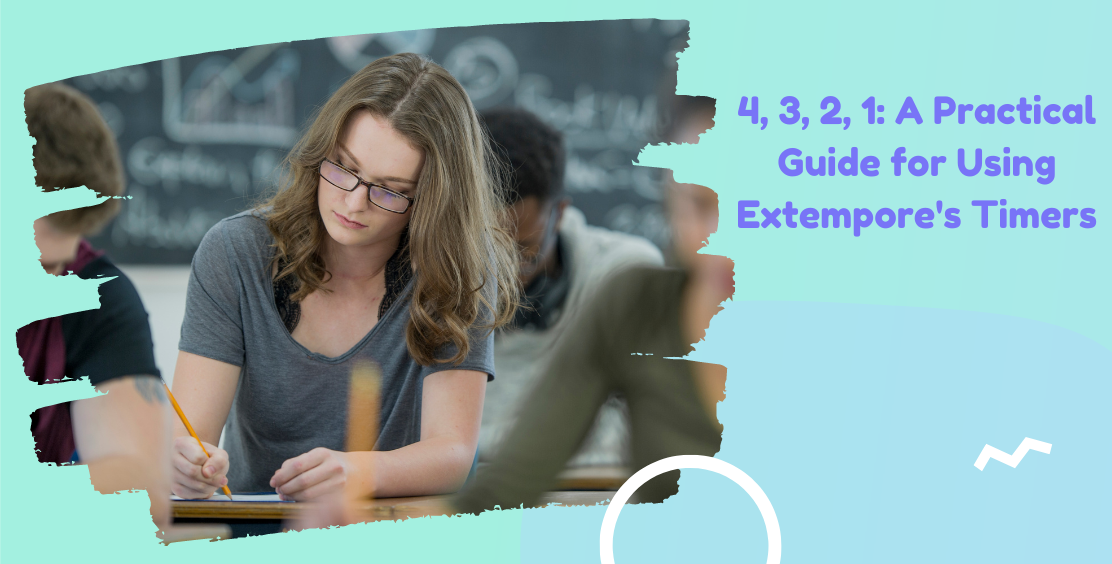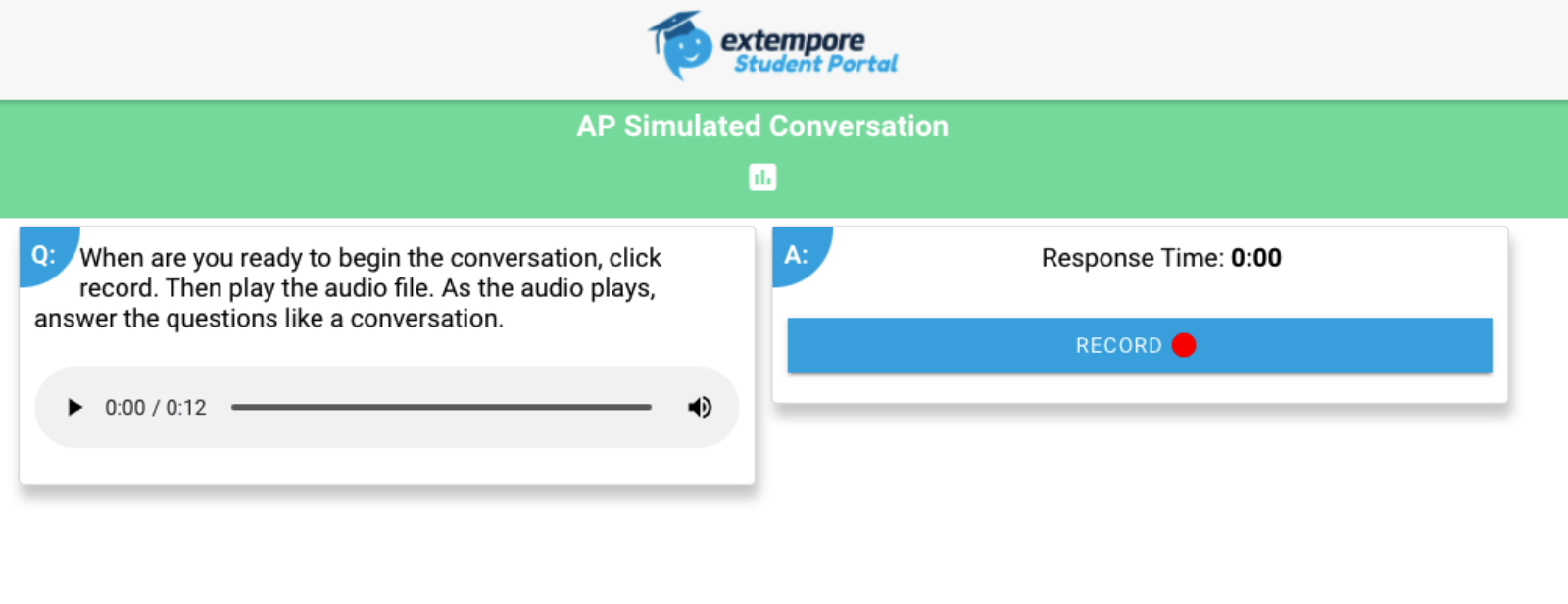WHAT, there are TIMED questions too????
Mr. Castner, I can’t even…
I couldn’t tell you how many times I’ve heard the above lines (or some iteration of it) from my students after having them complete Extempore 101 for the first time. They were going through that mock assessment to both get a feel for the platform and see what types of questions they would have to answer. When they arrived at the timed questions, however, I remember seeing some of their eyes widen and mouths agape. No way…
Watch Grant (Mr. Castner) explore this blog in the blog breakdown video below.
Timing parameters are one of Extempore’s defining features. Instructors use our platform to elicit extemporaneous responses from their students, and our timers directly facilitate that. Likewise, for input-based assessments, they provide students with a set amount of time to replay a TL prompt or interpret an authentic resource in the TL. For teachers looking to create secure, high-quality summative assessments, timers are an invaluable feature of the platform.
And yet, timers scare us. Whether it’s two days left to submit a proposal, six seconds left to cross the street, four minutes before the post office closes, or 30 seconds on the clock in a tight basketball game, we feel pressured by timers. And rightfully so! That’s why they exist - to elicit a sense of urgency. It should come as no surprise, then, that when we impose assessment timers on our students, this pressure multiplies tenfold. All this before even considering that students are operating in another language. On top of grades and feedback, many of these students have anxiety about both TL pronunciation and judgment from peers and their instructors.
For teachers looking to create secure, high-quality summative assessments, [timers] are an invaluable feature of the platform.
Add up all these factors, and you have the perfect storm of a high stakes assessment, which……we don’t want. What we do want is for our students to feel comfortable and confident whether they are interpreting or producing the target language, even when they face time limitations. So what do we do? Here are some tips for preparing students (and instructors) for timed assessments on Extempore.
#1 Don’t use them right away
If it sounds obvious, that’s because it is. I’ve heard countless stories from new users who approach me and say, “Grant, I did a timed assessment with my students, and they were all so nervous!” My immediate response is “Well, did you create practice opportunities with timers beforehand?” “Oh…”
In some sense, we at Extempore deserve a bit of the blame. It’s a bit tricky here because during product demonstrations, we always make sure to showcase the timing functionality; as I mentioned, they are an integral part of the platform. Upon teachers seeing the timing functionality, their eyes light up. Combine this with navigation warnings, and it becomes understandable that teachers would want to use them right away. Understandable indeed, but not the right approach….
Practicing with timers on multiple occasions before a summative assessment is the first step to ensuring student comfort and confidence.
#2 Practice with them beforehand
Leading us to the actual right approach: practicing with timers and building confidence and comfort with the platform and learning content beforehand. With any new platform for both students and teachers, there’s a learning curve, and Extempore is no exception. Practicing with timers on multiple occasions before a timed summative assessment is the first step to ensuring student comfort and confidence. Follow the steps and timeline below with your students for best results. Watch the 'bite' video with me below for a step-by-step guide.
Week one - Extempore 101 + untimed questions 2-3 assessments / practices
Week two - Students do more untimed questions with just one timed question for practice. This could be, for example, a four question assessment with one timed question at the end. It doesn't even have to be speaking; try to do two of these assessments (four questions - one timed)
Week three - Now you can start doing summative assessments with appropriate timed questions. Gauge student confidence using the results of their previous assessments, and talk with them to see how they feel before doing bona fide summative assessments.
#3 Be intentional about timer usage - don’t use them arbitrarily
The examples above segue nicely into tip #3: don’t use timers arbitrarily. They are not toys, nor they should be used as a 'gotcha' mechanism ('this is why we can't have nice things...'). To this end, you also don't likely need every question on your assessment to have timing parameters attached. This isn't to say that you can't, but to again be conscientious of how you are using timers. One of our most recent updates involves moving the timing parameters setting to the question level, meaning that when creating an assessment, you won't configure timers for every question all at once, but rather on a per-question basis.
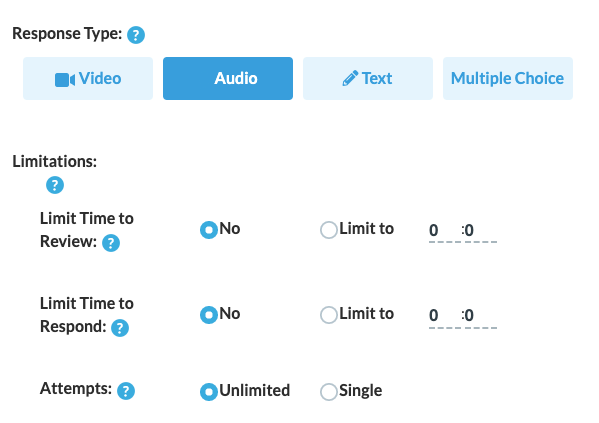
When instructors use timers properly, the timers will...
- Elicit spontaneous, unprepared responses in the target language
- Replicate the authentic assessment environment of AP or STAMP assessments, for example.
- Provide an appropriate challenge (whether input- or output-based) for students who are already comfortable with the target language at hand.
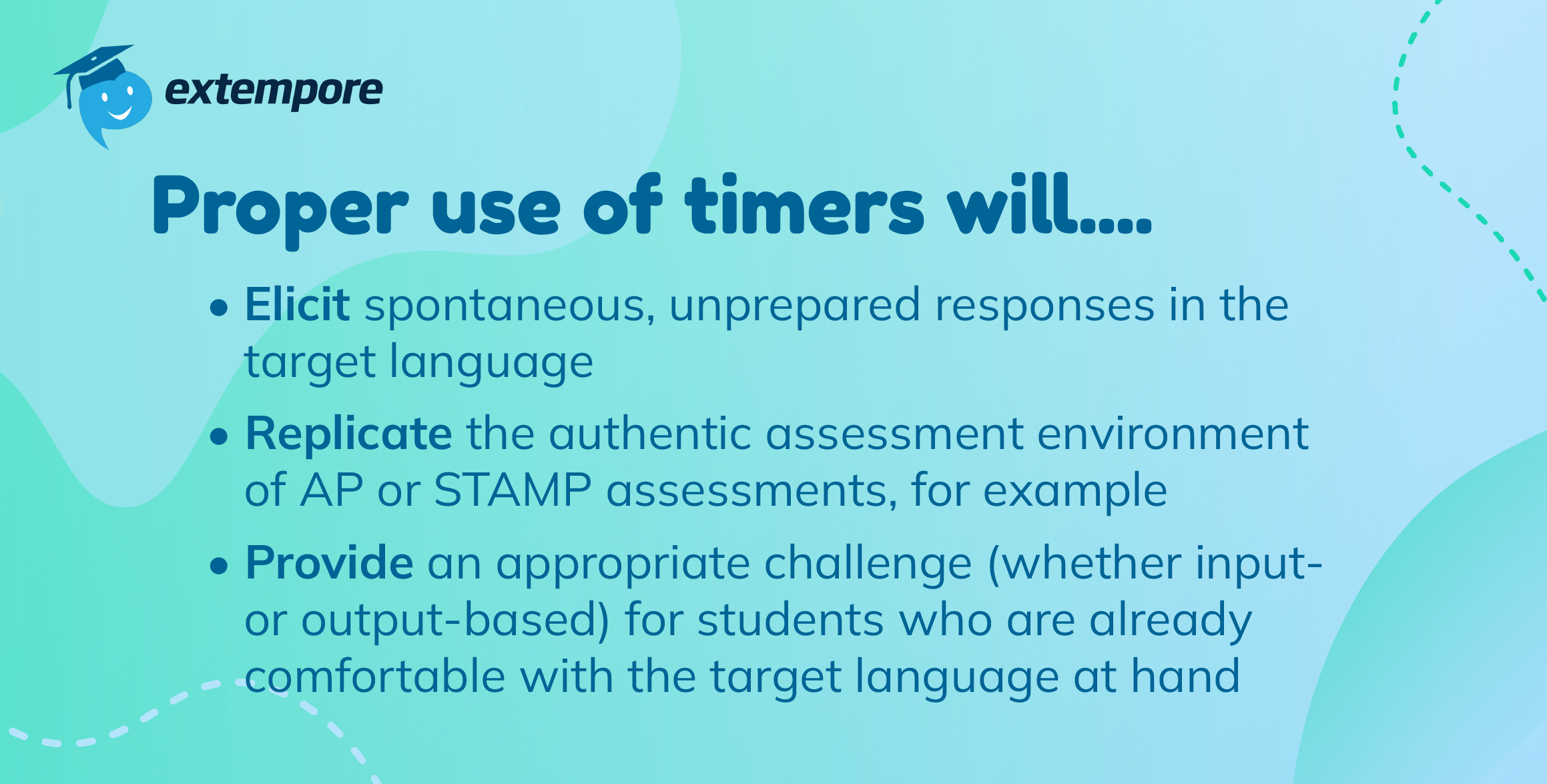
If your question does not achieve at least one of the above points, then you should not be using timers on your assessment.
After an assessment, review the material with your students and share why you wanted a spontaneous response (i.e. used timers) for that prompt. Justify their usage to your students afterwards - or better yet, ask them! Why do you think I put timers on this question?
Mr. Castner you wanted to scare us!
Let's hope with enough practice, they won't be responding like that.
#4 Students must be both confident with the language and the platform before you can even consider using timers
Think about all of the boxes we have to check before giving an assessment.
- Are students ready to be assessed?
- Have they had enough exposure to the target material to merit an assessment?
- Can they do what's being asked of them on the assessment?
There's a lot that we have to consider, which is why the above steps are designed to help students develop the highest degree of both comfort and confidence using the platform. While this is occurring, ideally instructors are building comfort and confidence with the classroom content, so that come assessment time, both factors are in perfect harmony.
Finally, don't forget about our accommodations settings. At the bottom of the class page, find your list of students. From there you can click on the settings cog and adjust both time limit extensions (for students who need extended time) as well as the option to allow students to enable playback controls, like .75 playback speed.
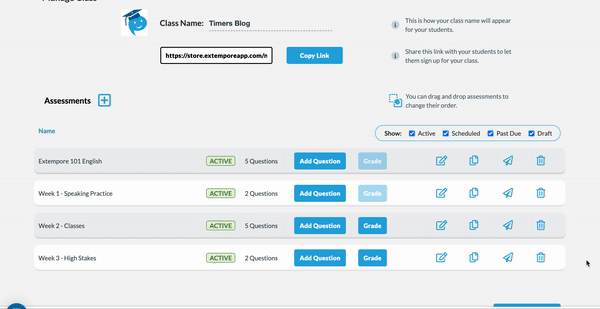
Extempore's timers can provide great benefit to both students and teachers, but haphazard misuse can cause a slippery slope of problems. With the right balance, they can provide an assessment safeguard while also ensuring spontaneous responses. Take these tips into consideration the next time you make a timed assessment, or if someone you know is just starting out with the platform.
